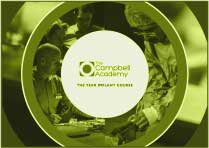.png?width=1627&height=517&name=Full%20TCA%20Logo%20(Purple).png)
3. Treating Patients like members of your own family – published 8.11.2011
This was published on the 8th November 2011; it had taken me almost a month and a half to start to get the courage to write about the philosophical side of things that I wanted to talk about. Although the concept is pretty basic and now to me seems like something that has been hammered out over the years, this is still the basis of upon which we make our clinical decisions at the practice.
It’s interesting to read back to this one because the orthodontist involved no longer speaks to me and in fact (although retired I think) has instructed to staff never to mention the name of my clinic in their practice because they were so upset with the outcome for treatment for the patient.
The fact was that the patient had attended back with 3mm spaces in the lateral incisor sites for reconstruction, which is just not possible. They’d gone back through orthodontics at our place and in the end had a fantastic implant retained result, which is still going strong 6 years later.
I have been providing implant treatment and oral surgery to patients in primary care since 1997.
I have learned a lot of things in that time and probably forgotten a lot of other things that I first learned but that has been one thing that has pervaded throughout the time and has grown and grown in importance as far as treating patients is concerned.
Some of the case we see at Campbell and Peace are particularly complicated and have many possible options for treatment, which have to be considered and discussed with patients. We are very lucky at the practice, that many patients trust us a great deal based on the trust that they have in their own dentist who has referred them to see us. One of the questions we get asked most commonly is "what would you do if it was you?" With this in mind, we have developed a system within the practice where we try to ask all clinicians and staff to use when dealing with people and that is to treat them as if they were a member of your own family. When we look at a difficult, sometimes heart wrenching, case we try to pigeonhole people as if they were a member of our own family and use this to make the decision.
It doesn't necessarily mean that everything will go well and it doesn't necessarily mean that we will get the ideal result but what it means is it can be clear in our minds that at that time it was the best course of treatment for the patient. Yesterday I saw a 14-year-old patient who has undergone 5 years of private orthodontic treatment due to missing upper lateral incisors. Her treatment plan had been to maintain space to have implants placed when she was old enough. When she saw me yesterday for an assessment it was clear that there was not enough space for implants to be placed. This involved talking at length with mother, father and patient (daughter) the consequences of this in treatment time, distress to the patient, pain and discomfort and cost.
Towards the end of the appointment the mother (who had been crying and was terribly upset) asked me what would you do. I explained that I have two daughters, the oldest of which is 10, and told her honestly and truthfully that the treatment plan I was proposing for her daughter is the one I would propose for mine. At that stage the mother and father said "that's good enough for us" and we will begin the process of treatment the patient as soon as possible. Perhaps it is stating the obvious but if we can do this for every patient every time I think we won't go far wrong.
Blog post number: 1501





Leave a comment